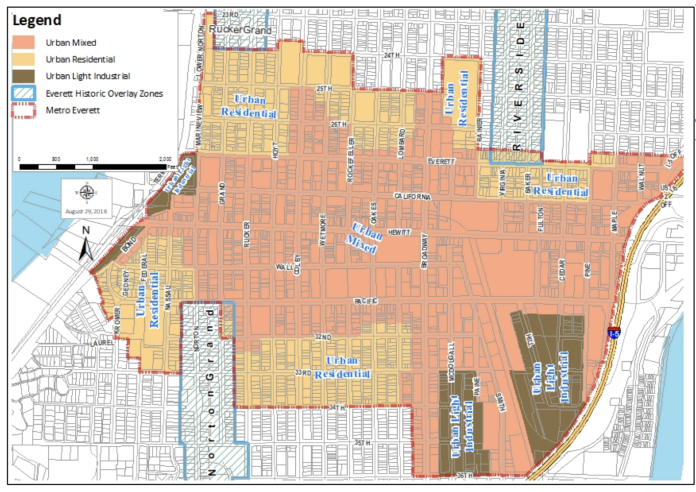In September, the Everett City Council adopted a comprehensive overhaul to zoning and development regulations in Downtown Everett and several adjacent districts. The adopted changes are fairly similar to the proposal that was highlighted on The Urbanist this past summer. The Metro Everett process was the culmination of dozens of public meetings and community outreach efforts that began as far back as late 2016.
Zoning Changes
Zoning throughout the Metro Everett was overhauled by largely consolidating existing zones into three categories: Urban Mixed (UM), Urban Light Industrial (ULI), and Urban Residential (UR). Layered on the zones are several key development standards for minimum and maximum building heights, orientation and design in relation to street classification, drive-through restrictions, and off-street parking requirements by parking zone.
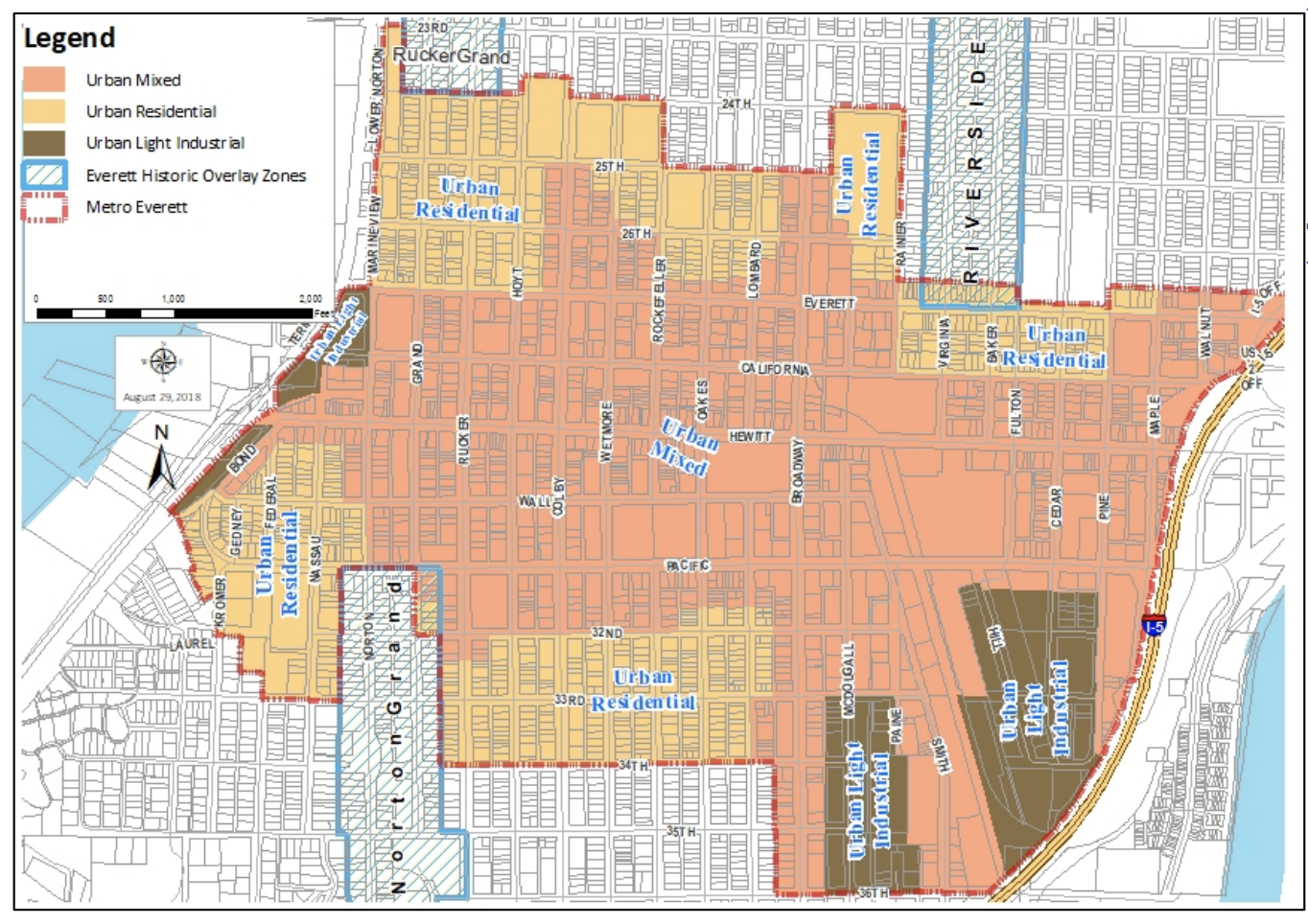
- Metro Everett Zoning. As their might names suggest, the types of uses allowed in the new Metro Everett zoning types differ. Urban Mixed allows the most intensive commercial uses like office, dense residential, retail, and service. Urban Light Industrial helps maintain and encourage flexible light industrial uses as well as some office and urban residential. Urban Residential generally permits a spectrum of residential uses that could large apartment buildings and townhouses to cottage housing and single-family homes in some cases.
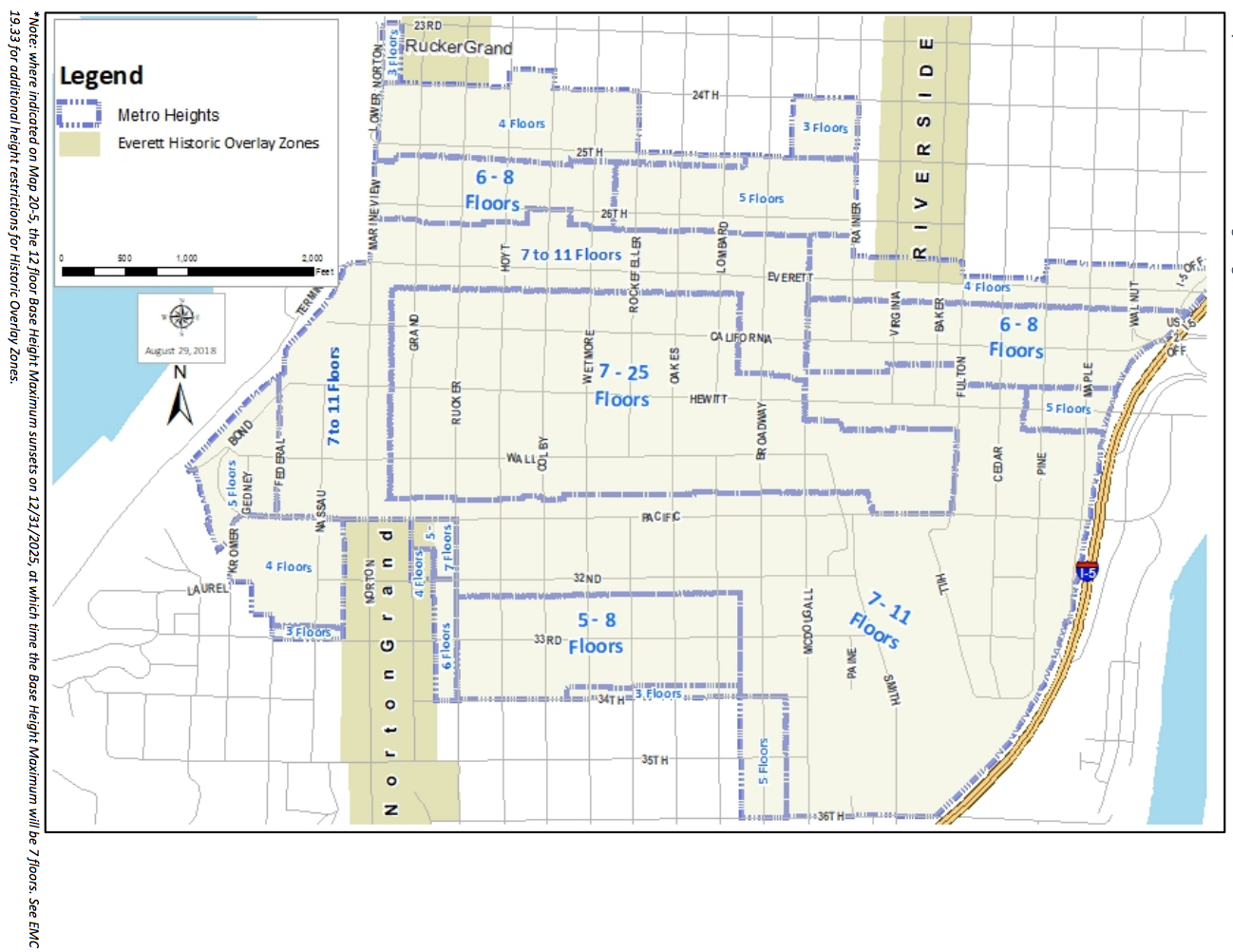
- Building heights. Building heights are regulated by an overlay map that specifies the maximum heights permitted. The lowest heights are planned for the edges of the Metro Everett area, generally at four or five stories. At the heart of the district, buildings could rise to 25 stories. Some areas have a range of allowed buildings heights, which indicate that incentives must be used to gain additional building height above the lower base maximum height. Examples of incentives that developers might choose include on- and off-site affordable housing, achieving green building standards, historic preservation, and providing public art and parking.
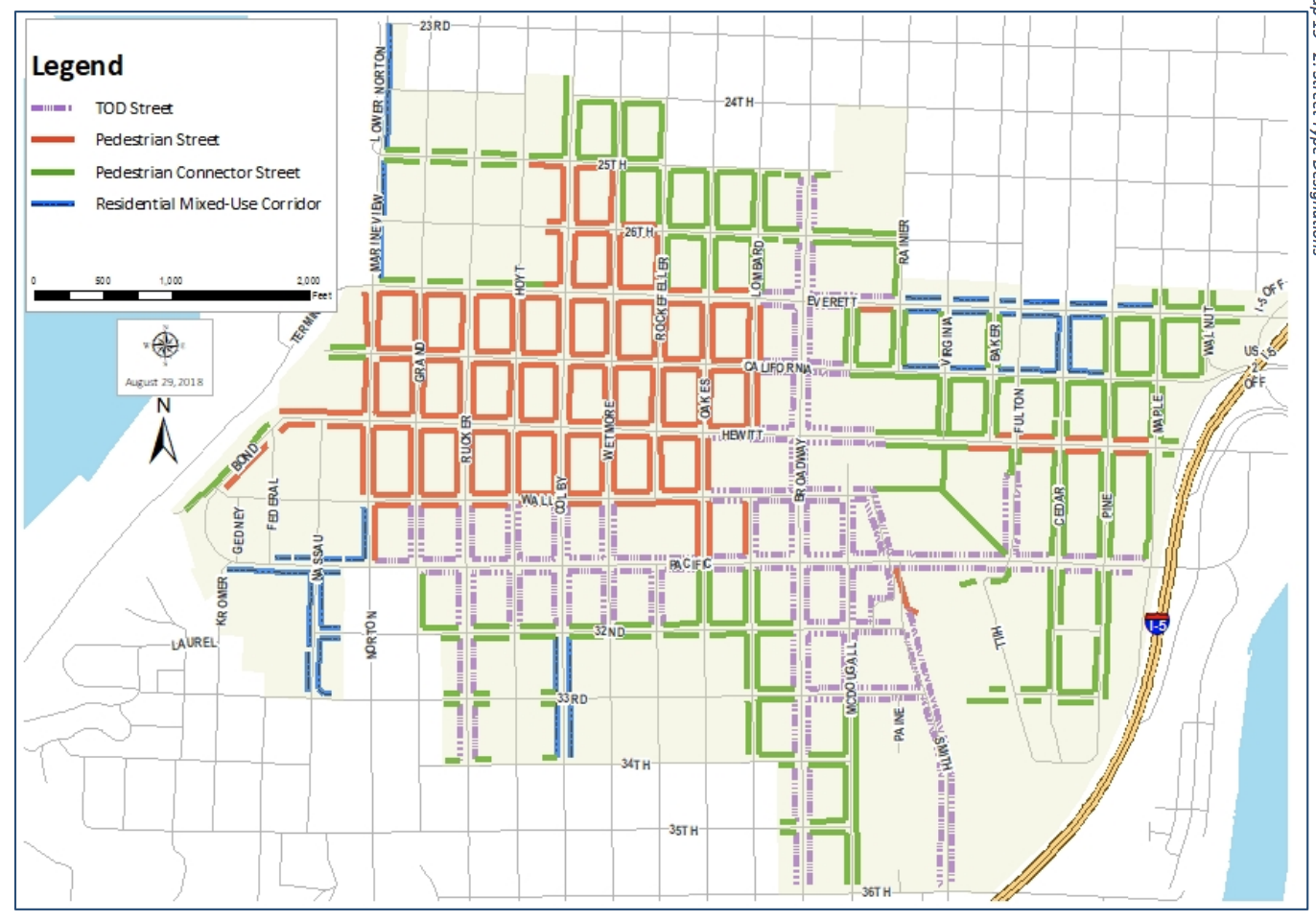
- Street classifictions. Blockfaces throughout much of Metro Everett have been given street classifications. The purpose of the classification system is to ensure that development is compatible with a street type. For instance, building setbacks, overhead weather protection, building transparency, allowed uses, and street design are predicated on the street classification of a blockface. There are four street classification types with Transit-Oriented Development (TOD) Streets being the most active type. TOD Streets encourage high building transparency, uses that generate foot traffic, and limit parking visibility.
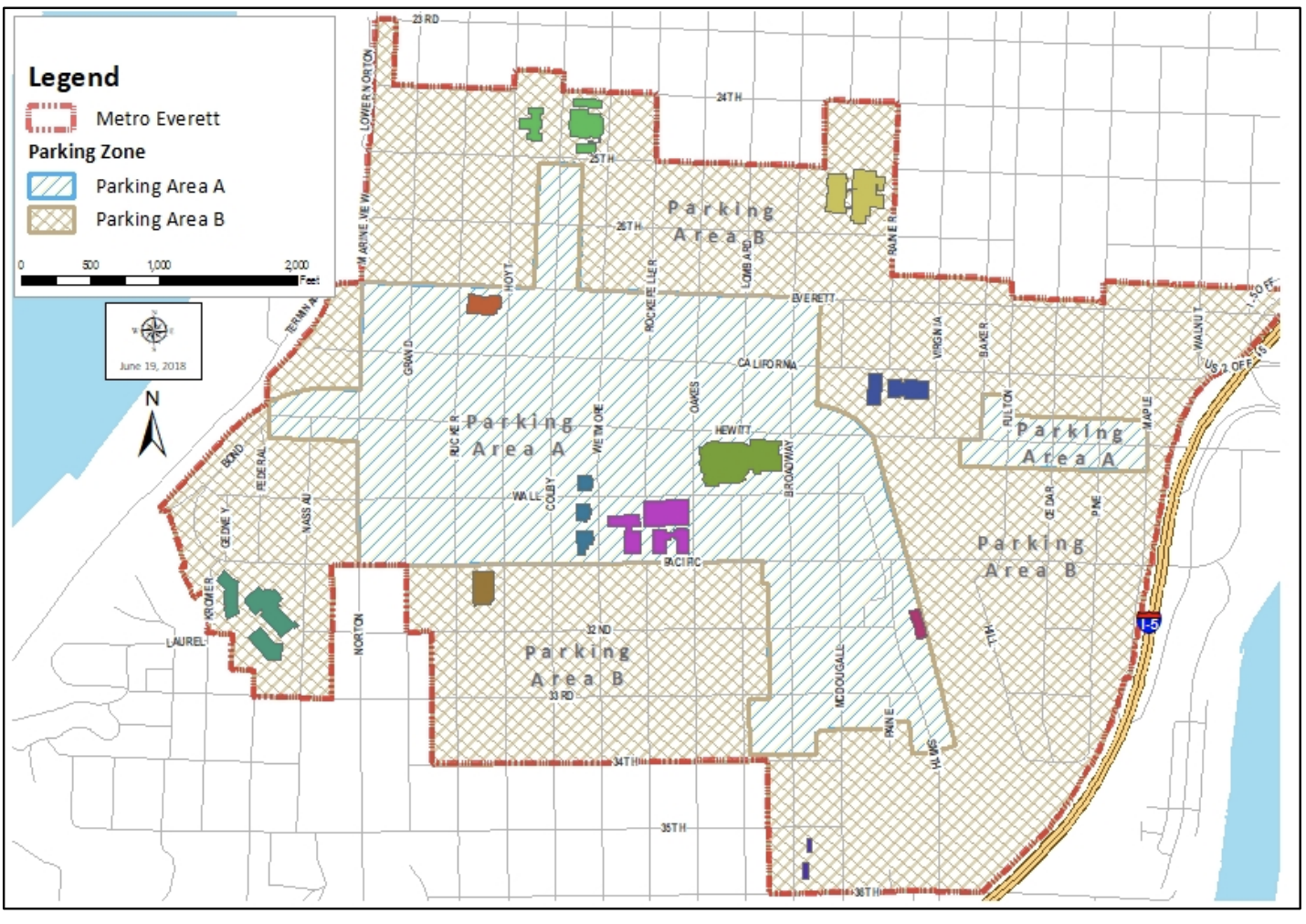
- Parking Areas. Two Parking Areas have been established in Metro Everett to provide for certain off-street parking exceptions. Parking Area A provides for significant off-street parking exceptions with no requirement for non-residential uses.
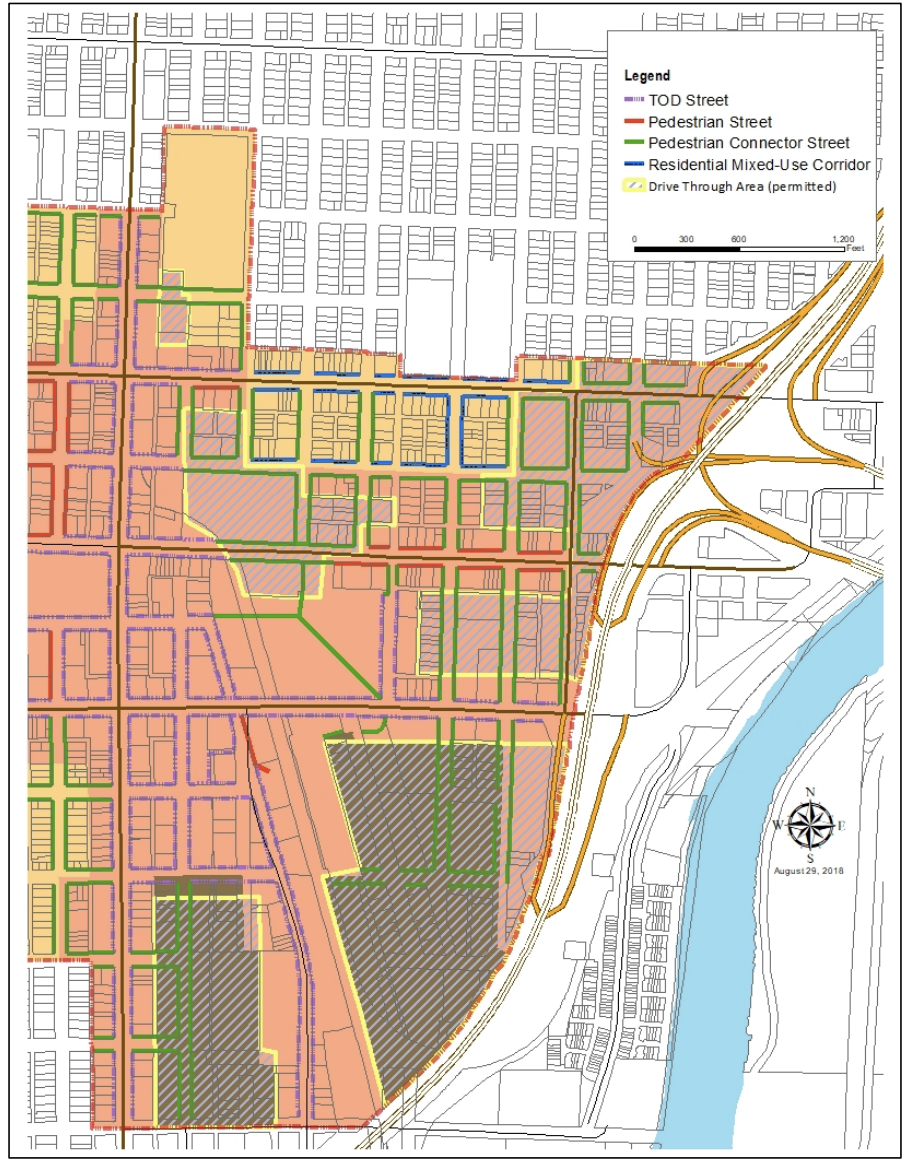
- Drive-through areas. Drive-through uses are now prohibited throughout much of Metro Everett with the exception of several areas. Sites that are still eligible for drive-throughs are designated specifically.
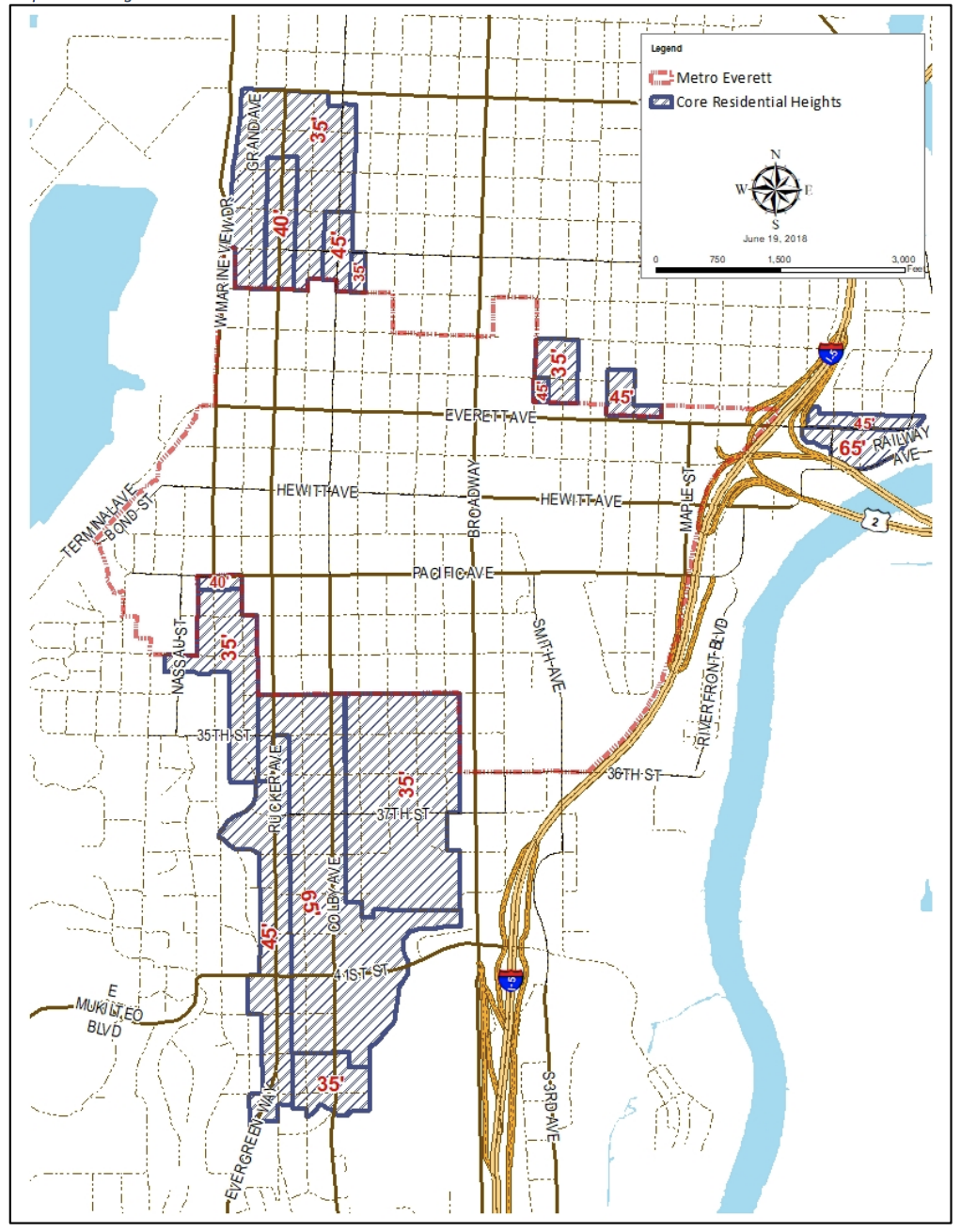
- Core Residential Area. Beyond the bounds of Metro Everett, the city adopted a new overlay district for higher-density residential and semi-mixed-use. The Core Residential Area (CRA) overlay applies similar development standards as those contained in Metro Everett to existing zones, such as R-2 and R-3. The underlying zoning regulations still apply, except when superseded by the CRA overlay development standards. As part of the new CRA overlay, the city revised maximum building heights in some cases, allowing new buildings as tall as 65 feet near Colby Avenue.
Development Regulation Changes
Aside from mapped zoning regulations, Everett adopted slate of new development standards for Metro Everett:
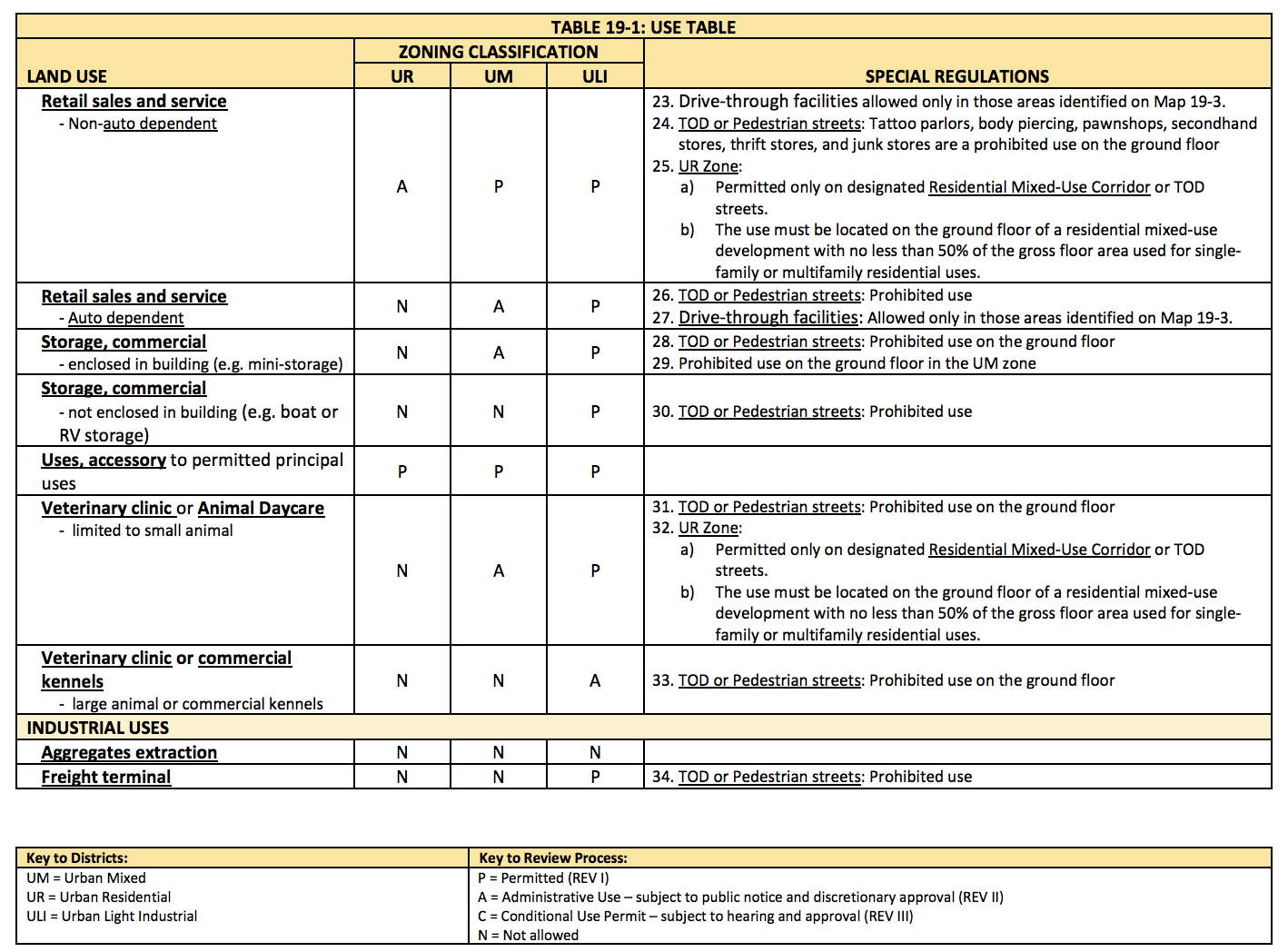
- Allowed uses. The newly established zones come paired with detailed use matrices to identify whether or not specific uses are allowed and any special conditions that apply to them.
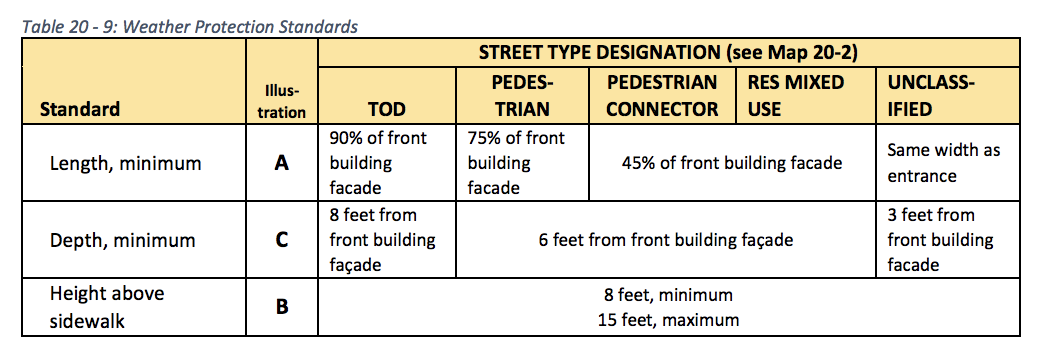
- Overhead weather protection. Overhead weather protection will need to meet specific standards depending upon the street classification of a blockface. TOD Streets will command a very robust amount overhead weather protection along street faces while unclassified blockfaces will essentially require none.
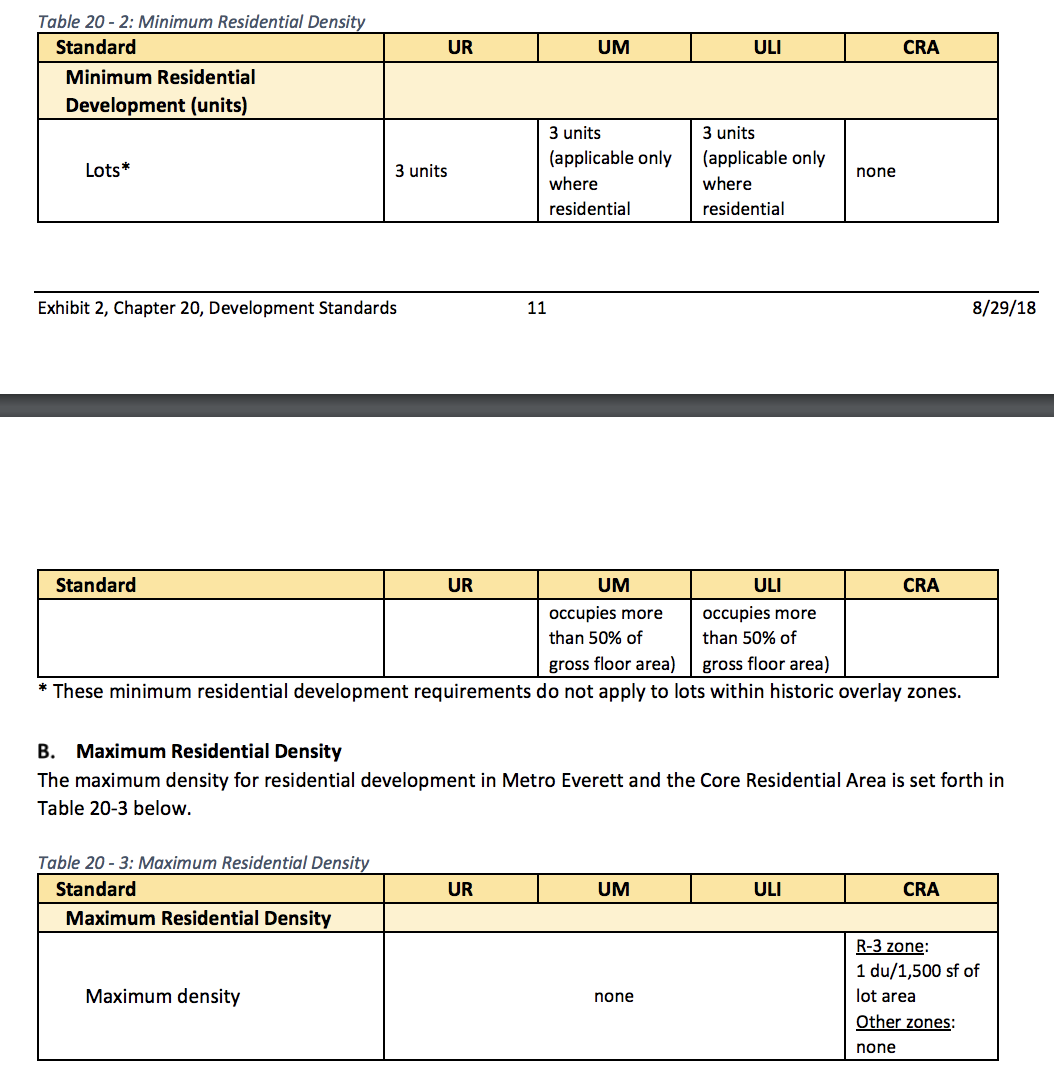
- Residential density. In Metro Everett and the CRA, Everett has adopted differing minimum and maximum residential densities.
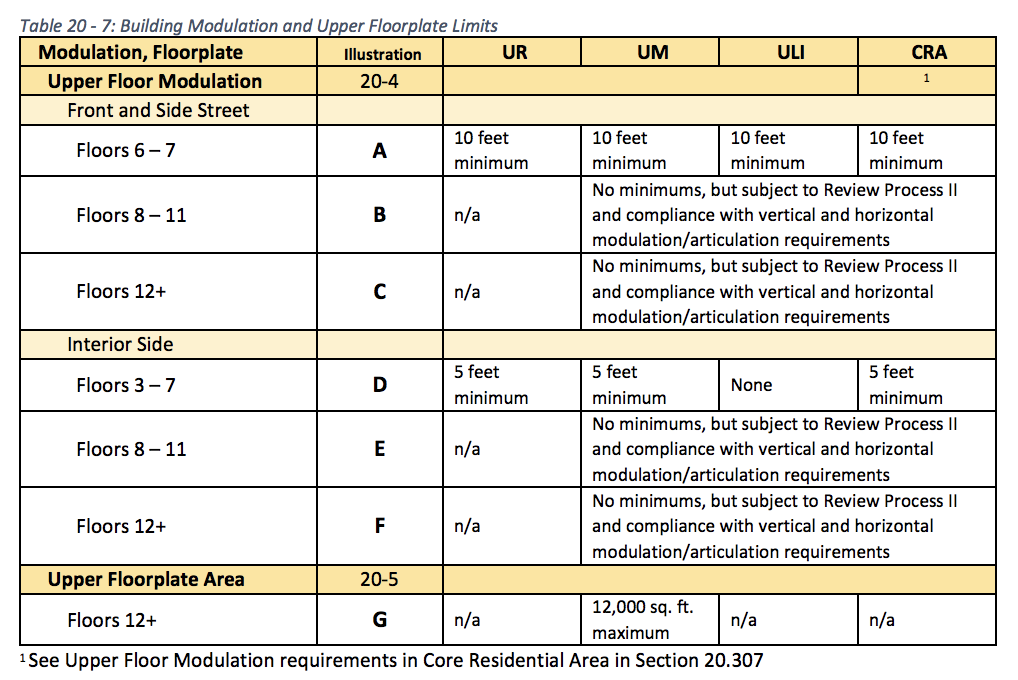
- Building modulation and floorplate limits. Upper floor modulation, articulation, and floorplate limits will apply to taller structures in Metro Everett depending upon the floor level, zone, and building side.
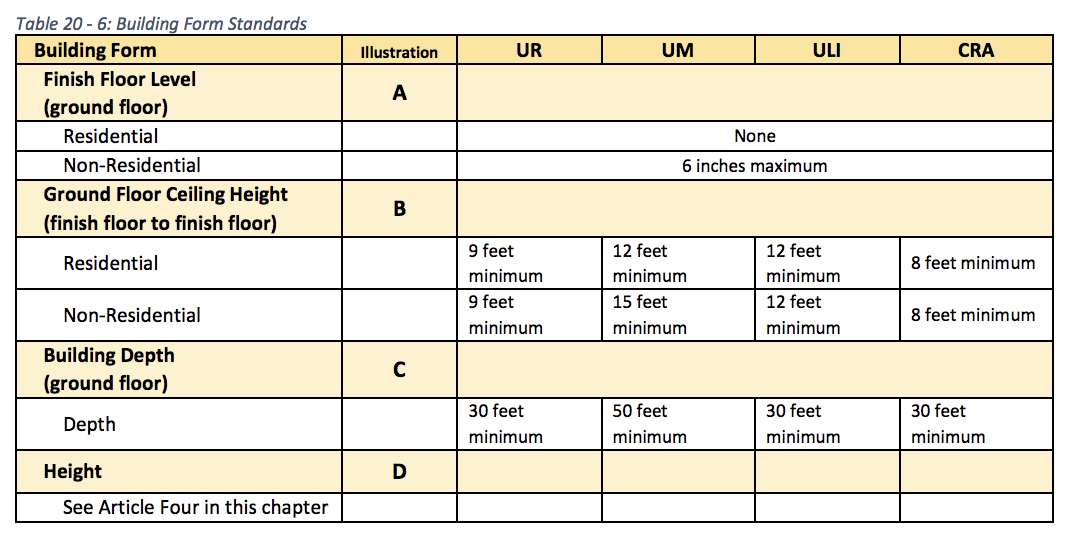
- Ground floor design standards. New ground floor design standards control minimum ceiling heights, finished floor level, and building depth to promote convertibility of spaces and ensure that they reflect the intent of their zones. UR zones, for instance, are allowed to have low building depth and ceiling height requirements since development in the zone is largely anticipated to be residential in nature. UM zones, on the other hand, have higher minimum standards, particularly for non-residential uses which would need to have at least 15-foot ceilings, a floor-to-ceiling height typical in retail and restaurant spaces.
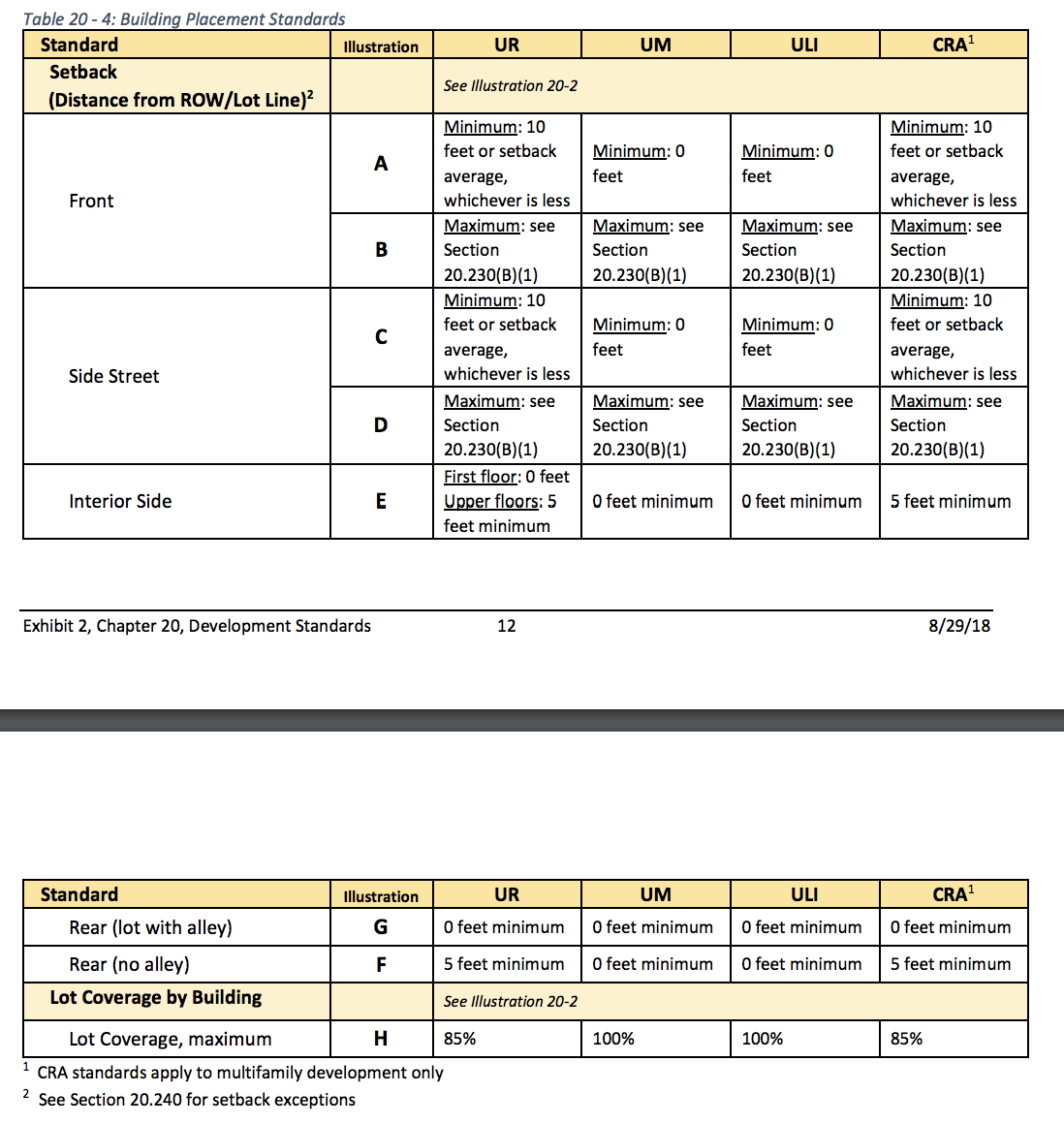
- Setbacks and lot coverage. New setback and lot coverage standards will apply in Metro Everett by zoning type. The setback standards are meant to generally encourage buildings to be close to the main street frontage. Maximum lot coverage by structures ranges from 85% to 100% of a site.
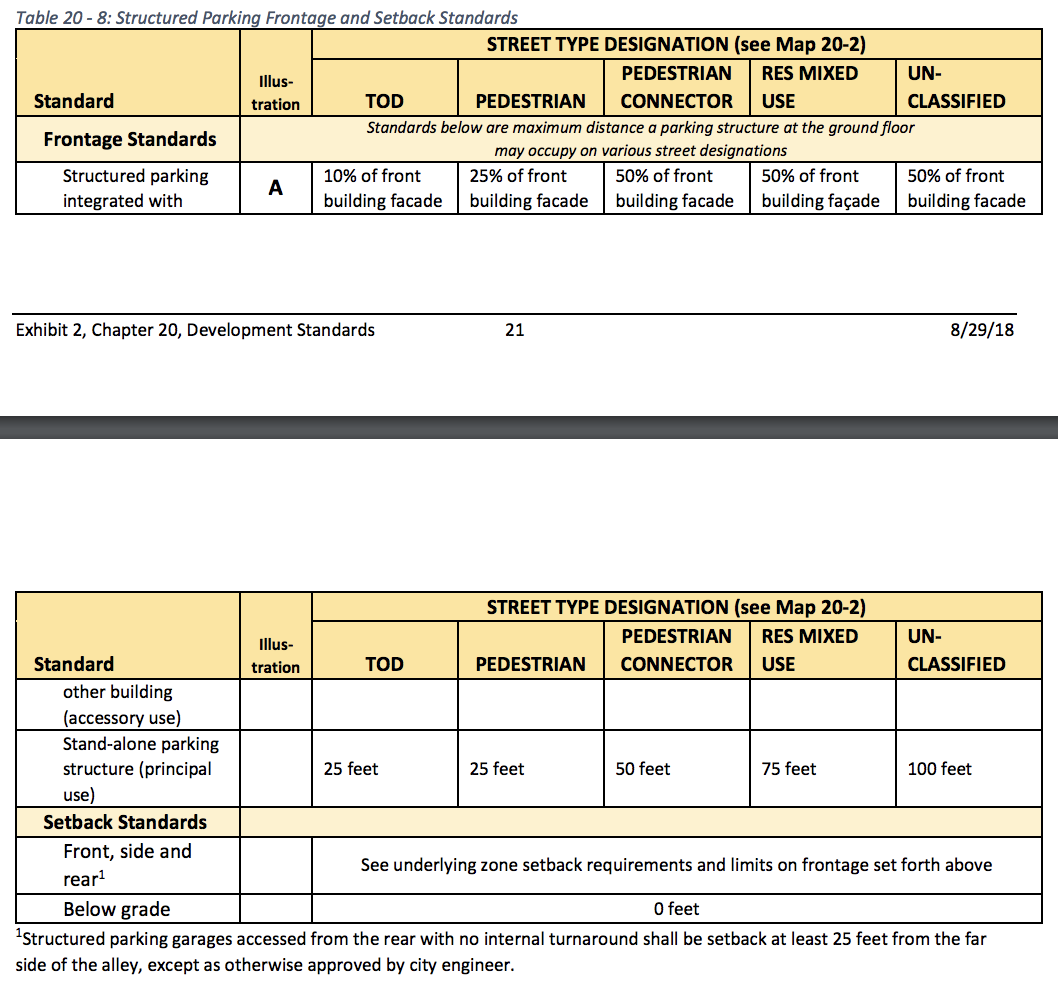
- Structured parking restrictions. Depending upon the street classification of a blockface, structured parking is subject to maximum frontage widths. The more active the street classification type, the less impactful structured parking is supposed to be.

- Building transparency requirements. The ground floor of buildings throughout Metro Everett will need to achieve minimum amounts of transparency through windows and doors based upon the blockface street classification. TOD Streets require the highest amounts of transparency to help with street activation.

- Minimum building heights. Some zones and street types will require primary buildings to achieve a minimum number of stories. TOD Streets will set the minimum at four stories while the ULI zone will require none (de facto one story).
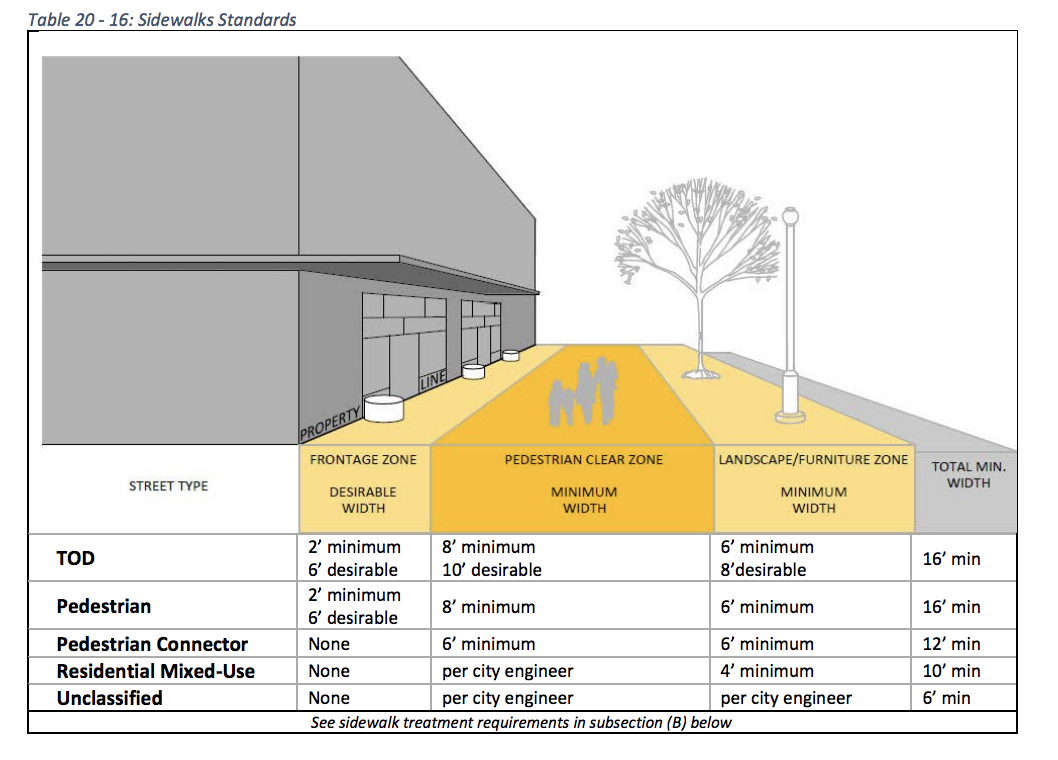
- Street improvement standards. New development will need to improve streetscape frontages based upon blockface classification. TOD Streets command the widest pedestrian zones and planter/furniture strips.
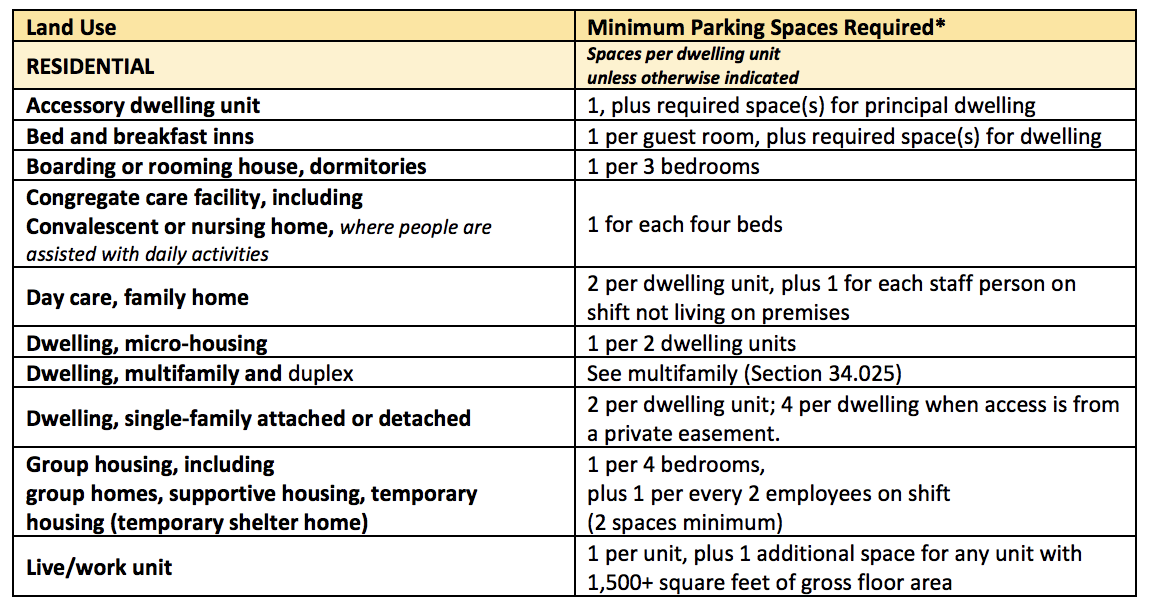
- Parking reductions. Minimum off-street parking requirements apply throughout Metro Everett by use. However, Parking Areas have a variety of possible exceptions, particularly for non-residential uses. The city also offers several parking reductions for multifamily uses by location and unit size or by resident, transportation, or development characteristics. For instance, low-income and affordable housing units or multifamily sites served by frequent transit can obtain off-street parking reductions. Alternative reduction options are provided for carsharing, additional bicycle parking, motorcycle parking, mixed-use projects, and submission of a parking study.
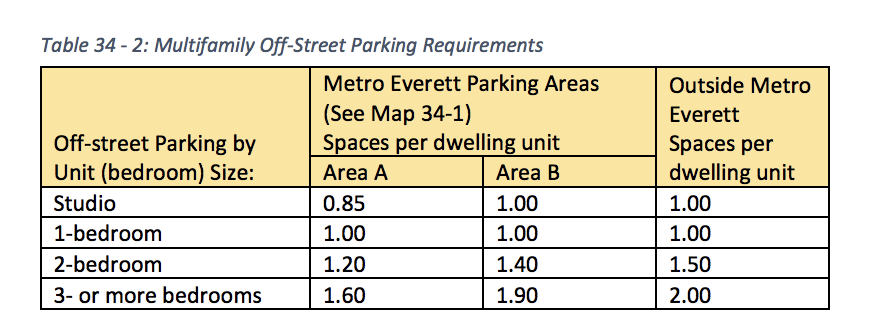
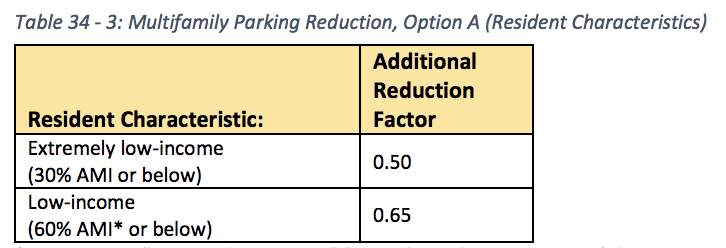
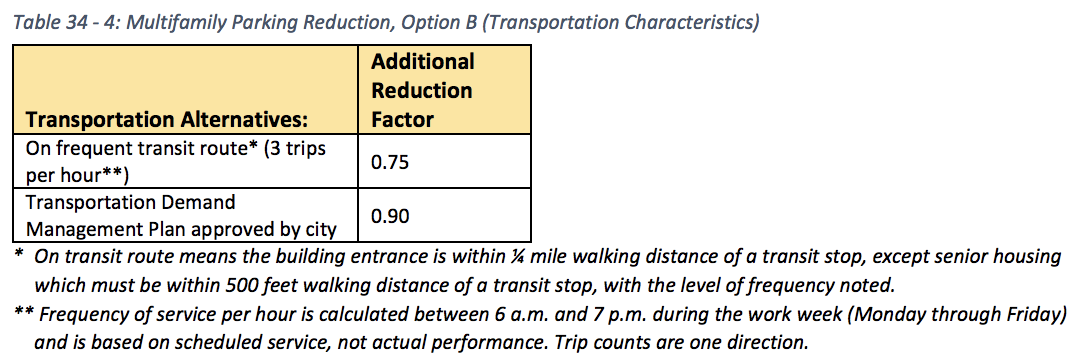

- Bicycle parking. New bicycle parking requirements will apply whenever non-residential developments are required to provide six or more off-street parking spaces and multifamily developments contain four or more dwelling units. The bicycle parking ratio will be set at one for every 12 off-street parking spaces provided in non-residential developments, with an upper maximum of 20 bicycle parking space required. In multifamily developments, the ratio is generally four covered bicycle parking spaces for every 10 dwelling units. New bicycle parking guidance also provides specificity in the location of spaces, access to them, and their design requirements.
- Other development standards. Metro Everett also have several other new development standards that touch on: the amount of and type open space and landscaping required; the manner in which fencing and retaining walls are allowed; design of porches, stoops, plazas, forecourts, and parking facilities; and the placement of street trees and lighting.
New SEPA Exemptions
In addition to the changes to zoning and development regulations, the city has opted to cut some of the procedural red tape for development proposal in Metro Everett. Projects may be eligible for further exemption from environmental review under the State Environmental Policy Act (SEPA) if they are located in UR, MR, or ULI zones and consist of mixed-use development, contain 200 or fewer dwelling units, or involve 65,000 square feet or fewer of commercial uses. Increasing exemption thresholds means that projects will be subject to one less element of appeal and scrutiny; instead the established development regulations are intended to adequately address SEPA-related issues.
Stephen is a professional urban planner in Puget Sound with a passion for sustainable, livable, and diverse cities. He is especially interested in how policies, regulations, and programs can promote positive outcomes for communities. With stints in great cities like Bellingham and Cork, Stephen currently lives in Seattle. He primarily covers land use and transportation issues and has been with The Urbanist since 2014.

